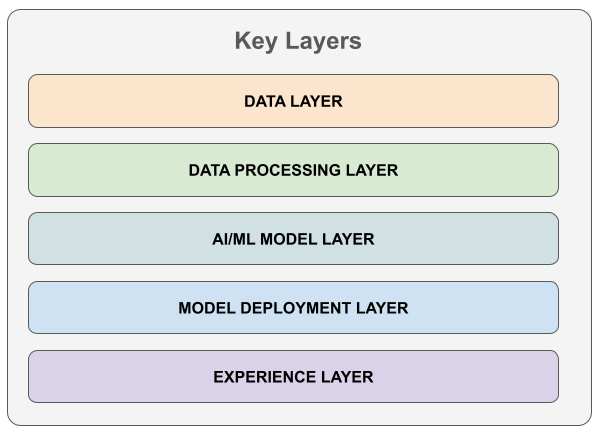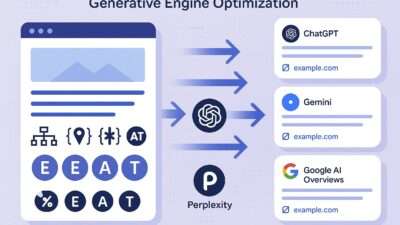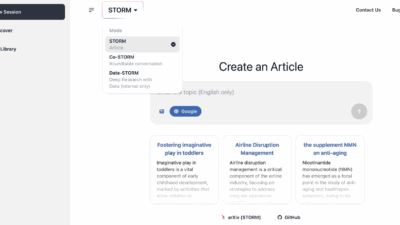In today’s digital era, Artificial Intelligence isn’t just a buzzword, it’s a business imperative. But let’s be honest: understanding how AI works under the hood can feel overwhelming if you’re not a techie.
Through this blog, I will try to break down AI architecture in a way that’s simple, clear, and actionable, especially for business decision-makers who want to lead with confidence in a data-driven world.
AI Architecture
Think of AI architecture as the blueprint of an intelligent system, a layered structure that takes raw data, turns it into insights, and delivers smart experiences to users.
Each layer plays a critical role in building enterprise-ready AI solutions, from customer chatbots to predictive analytics and generative AI tools.
5 Key Layers of AI Architecture

1. Data Layer – Fueling the Engine
This is the foundation. Without high-quality data, AI can’t function.
- Purpose: Store and organize all your business data
- Example Technologies: Snowflake, BigQuery, AWS S3, Azure Data Lake
- Why it matters: Enables a 360° view of your customers and operations
2. Data Processing Layer – Cleaning and Prepping
Before AI can learn, data needs to be cleaned and structured.
- Purpose: Prepare and transform data for analysis
- Examples: Databricks, Apache Spark, dbt, Airflow
- Why it matters: Ensures data quality and readiness for machine learning
3. AI/ML Model Layer – The Smart Core
This is where intelligence is built using machine learning and deep learning.
- Purpose: Train models to predict, classify, and generate outcomes
- Examples: Vertex AI, AWS SageMaker, TensorFlow, PyTorch
- Why it matters: Helps businesses automate decisions and personalize experiences
4. Model Deployment Layer – Bringing AI to Life
Once trained, models need to be deployed into real-world applications.
- Purpose: Make AI accessible via APIs and services
- Examples: MLflow, TFX, KServe
- Why it matters: Enables real-time intelligence in business apps
5. Experience Layer – Where Users Interact
This is the final layer where AI meets the end user.
- Purpose: Deliver AI through dashboards, apps, chatbots
- Examples: , Salesforce Einstein, Microsoft Teams, GPT Clients, Slack, Web/mobile apps
- Why it matters: Translates complex insights into user-friendly experiences
An Example Use Case
let’s try to understand it through a simple use case. Imagine you’re a retail brand aiming to personalize shopping experiences:
- Data Layer: Store customer data in Snowflake
- Processing Layer: Clean and transform data in Databricks
- Model Layer: Train a recommendation model using Vertex AI
- Deployment Layer: Serve the model through an API
- Experience Layer: Show product suggestions in your mobile app
What Next?
As many organizations are going AI first, no-one can shy away from the AI wave. If not today, it you will have to face it tomorrow, what ever role you are into. This article is meant to give you some directions on where to proceed. Countless number of resources are available in internet to learn AI.
Here are few that you may like
– Grow With Google
– Generative AI for Everyone
– Open AI Academy
Keep Learning, Keep Growing!





